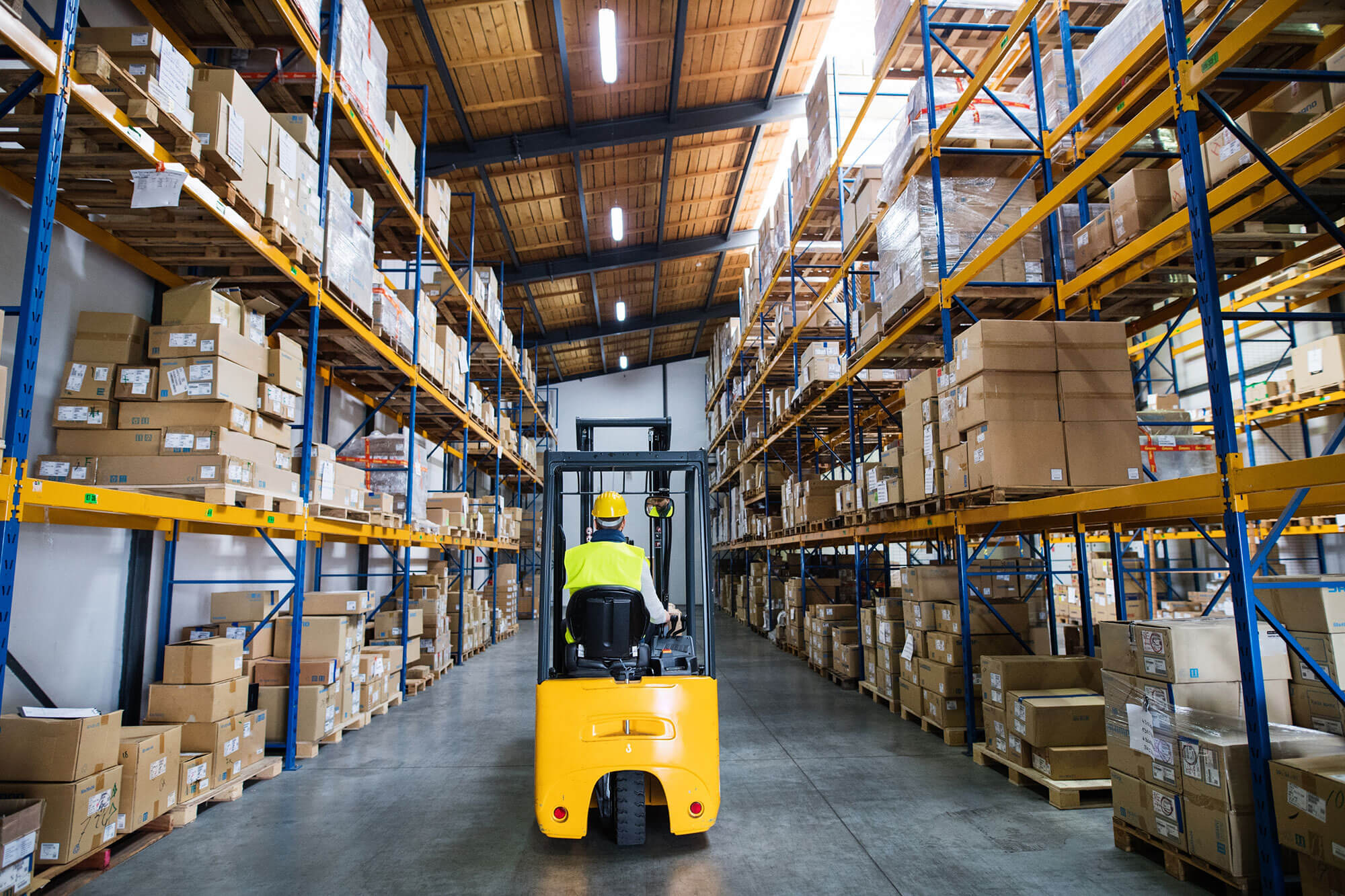
Smart HVAC & Ambient Design: Overcoming Warehouse Overheating
Daniel Wood, Head of Sales for Carrier Airside, part of Carrier UK & Ireland, examines the roles of HVAC and ambient design in a rapidly heating world, as well as the balance of mechanisms required to achieve efficient and effective warehouse climate control.
Optimising warehouse operations in today's complex commercial landscape is paramount for thriving businesses. A critical aspect of this optimisation lies in understanding the nuances of different warehouse types and their specific climate control needs. Two primary categories dominate the scene: temperature-controlled and ambient warehouses. Each serves distinct purposes and caters to product requirements. Choosing how best to maintain climate control has far-reaching implications for product integrity and energy consumption, environmental impact and operational costs.
The Overheating Challenge
Overheating is a significant challenge when facing rising temperatures. The United Kingdom, known for its temperate climate, is experiencing more frequent and intense heatwaves. This phenomenon poses substantial risks to health, well-being and productivity. The UK is also reported to be "dangerously slow"1 in dealing with climate challenges, so a rapid change to the pace of intervention is critical.
Under current weather conditions, the risk of overheating is exceptionally high, with southern England being the most affected.2 Based on limited UK evidence, one study suggests that a 2°C rise in global temperatures could deplete London’s economic output by around 0.4% due to reduced productivity in the workplace.8 These higher temperatures are predicted to become a high risk by 2080.3
So now that we know the risks ahead, how does that affect warehousing?
The Rise of Specialised Warehouses
While global supply chains have historically expanded and diversified, driving up demand for specialised storage solutions, the landscape may be beginning to shift. Recent developments, such as the imposition of new US tariffs, raise questions about whether this trend will continue or give way to a resurgence in more localised supply strategies. It is, perhaps, too early to say definitively. However, one thing is certain: supply chains must continue to evolve and adapt. In this context, temperature-controlled warehouses have become a critical component in ensuring product integrity. These facilities rely on advanced technologies to maintain precise temperature and humidity levels, safeguarding perishable goods, pharmaceuticals and other climate-sensitive products. Even minor fluctuations can result in significant losses, particularly for sectors bound by stringent compliance guidelines, such as the MHRA’s standards for pharmaceutical storage, which stipulate not only a temperature band but also a length of time for which the goods can be stored outside of this band before the stock is written off, sometimes at the cost of millions.
As UK climate temperatures rise, designing to 30°C ambient in summer is no longer a viable option. Record summer temperature peaks will likely lead to increased strain on the HVAC systems during heat waves and a high risk of stock write-off. Therefore, correct design is imperative at the outset of the project. Carrier is currently recommending that ventilation systems for critical applications are future-proofed and designed for a 38°C ambient in summer across the UK, rising to 40°C in the south of England.
On the other hand, ambient warehouses, operating traditionally without climate control systems, cater to the storage of dry, durable goods like packaged foods, textiles, appliances and electronics. These facilities offer cost-effective storage solutions for products that don't require strict temperature regulation. However, even in ambient warehouses, maintaining a stable temperature range is essential to prevent product damage and ensure optimal working conditions for employees. However, the increasing frequency and intensity of heat waves in the UK4 makes this increasingly tricky without mechanical intervention.
A Foundation for Efficient Climate Control
While sustainable warehouse design, incorporating elements like building orientation, insulation and natural ventilation, can contribute to a more energy-efficient facility, it's essential to recognise that these passive measures alone are often insufficient to meet modern warehouses' complex climate control demands. As a result, advanced mechanical systems have become essential for maintaining optimal conditions.
The Heart of Warehouse Climate Control
HVAC systems are the cornerstone of adequate climate control in temperature-controlled and ambient warehouses. HVAC systems like Carrier’s packaged CIAT RTU range5 have become increasingly crucial for regulating temperature fluctuations caused by external weather conditions and internal heat sources, even in ambient warehouses.
Incorporating integrated cooling (and/or heating) via a heat pump using lower GWP R454B refrigerant, which has a rating of 466, offering a maximum cooling load of up to 273kW and heating up to 300kW per unit, with a maximum airflow rate of 54,000m3/hr, in-built filtration, and intelligent packaged controls, the range is currently being utilised across the UK for warehouse applications, both critical and non-critical.
The unit components can be tailored to the specific needs of each warehouse, considering factors like size, layout, occupancy, and the nature of stored goods. By integrating features like free-cooling, intelligent sensors, heat recovery, predictive maintenance and remote monitoring via Carrier’s Blue Edge service offerings, HVAC systems can further optimise energy usage and minimise downtime, resulting in significant cost savings for warehouse operators.
Proven Performance: Smart HVAC Solutions in Warehousing
The importance of HVAC systems in warehouse climate control is best illustrated through real-world applications. Air Technology Systems (ATS), a specialist design and installation contractor for heating, cooling, and ventilation, has extensive experience delivering climate solutions for pharmaceutical and logistics warehouses. These facilities often store high-value goods requiring precise temperature control across densely racked spaces, some exceeding 40 metres in height.
A robust HVAC system is at the heart of ATS’s installations, incorporating heating and cooling equipment such as electric heat pumps, chillers and air handling units. The challenge is to maintain consistent horizontal and vertical temperature gradients, ensuring an optimal environment for both products and personnel.
Kevin Gillen, Business Development Director for ATS, explains why Carrier remains a preferred supplier for these technically demanding projects:
"We work closely with the Carrier sales team from the outset to ensure we select the best technical and commercial equipment to meet our clients' needs. Their sales and technical support at the enquiry stage help us identify the best solution from the very beginning.
In most cases, we choose CIAT rooftop units due to their many advantages, which give us a competitive edge while freeing up valuable internal space and ensuring reliable performance. The ability to deploy multiple units provides essential redundancy in critical environments and the high external static pressure (ESP) ensures maximum air distribution with minimal temperature gradients.
Additionally, the standard option for remote monitoring integration has been a significant benefit, enhancing system oversight and efficiency. Beyond the product itself, Carrier’s commissioning and service support in the UK and globally demonstrates its commitment to long-term reliability and customer satisfaction. We highly value our partnership with Carrier and the expertise they bring to every project."*
As climate challenges intensify and operational demands grow, ensuring precise temperature control through innovative, high-performance systems will be essential for maintaining product integrity and optimising efficiency.
A Note on Renewables
Energy consumption is a significant factor in warehouse operations, accounting for 5-10% of operational expenses in ambient warehouses and a substantial 15-20% in temperature-controlled facilities. Solar thermal, solar photovoltaic, wind, biofuels, biomass, geothermal resources, and energy recovery from process waste are all viable options for augmenting power in warehouse operations. Integrated and controlled alongside highly efficient, precisely controlled HVAC systems and blended with passive building methods, this combination can help further reduce costs and environmental impact.
The Future of Warehouse Climate Control
As global climate changes and energy costs rise, innovative and sustainable warehouse climate control solutions are more critical than ever. HVAC providers like Carrier are at the forefront of this evolution, developing cutting-edge technologies that maximise energy efficiency, minimise environmental impact and ensure the optimal storage and distribution of goods.
By investing in advanced HVAC systems, integrating renewable energy sources where possible, and adopting a holistic approach to climate control, warehouse operators can create resilient, efficient and sustainable facilities that meet the demands of the modern supply chain while contributing to a greener future.
Find out more at Carrier air conditioning, heating and ventilation | Carrier United Kingdom.





